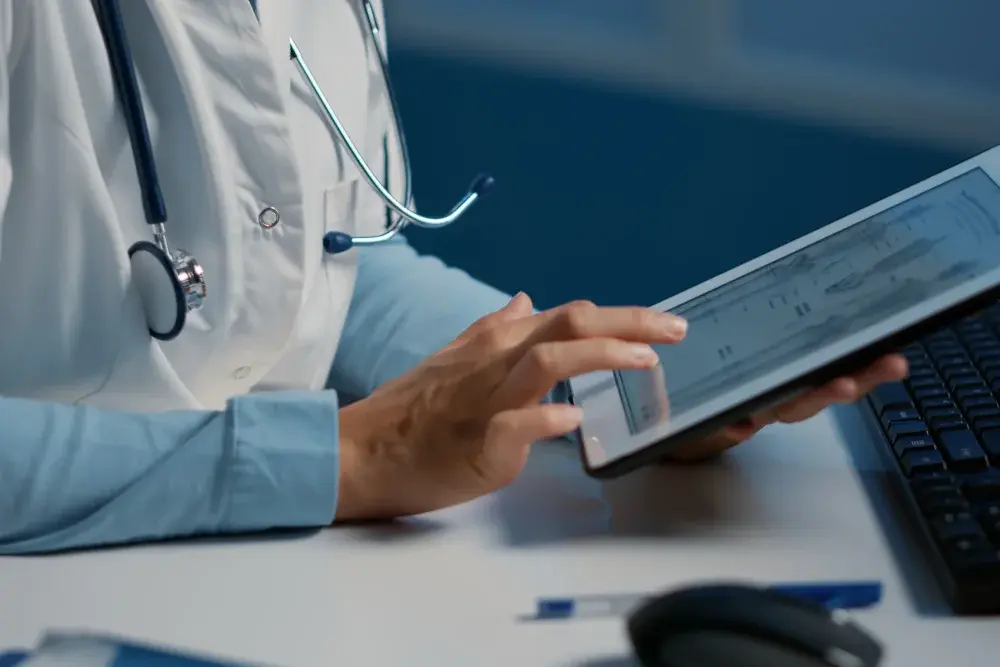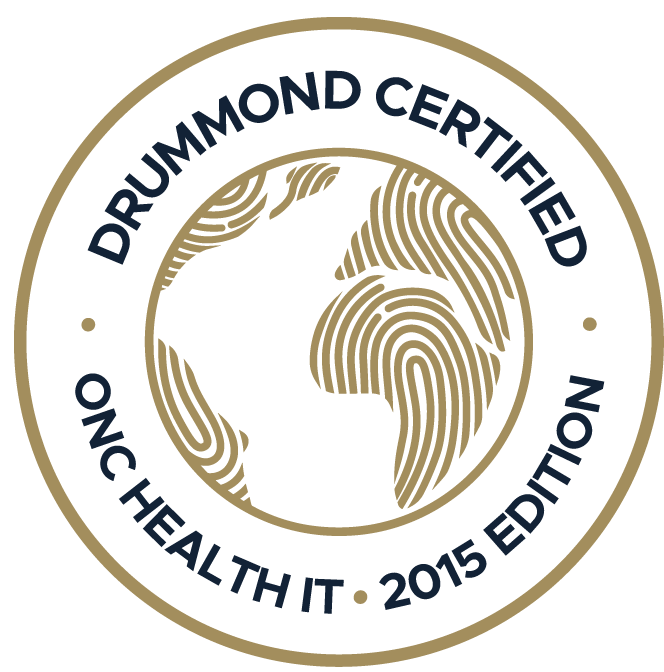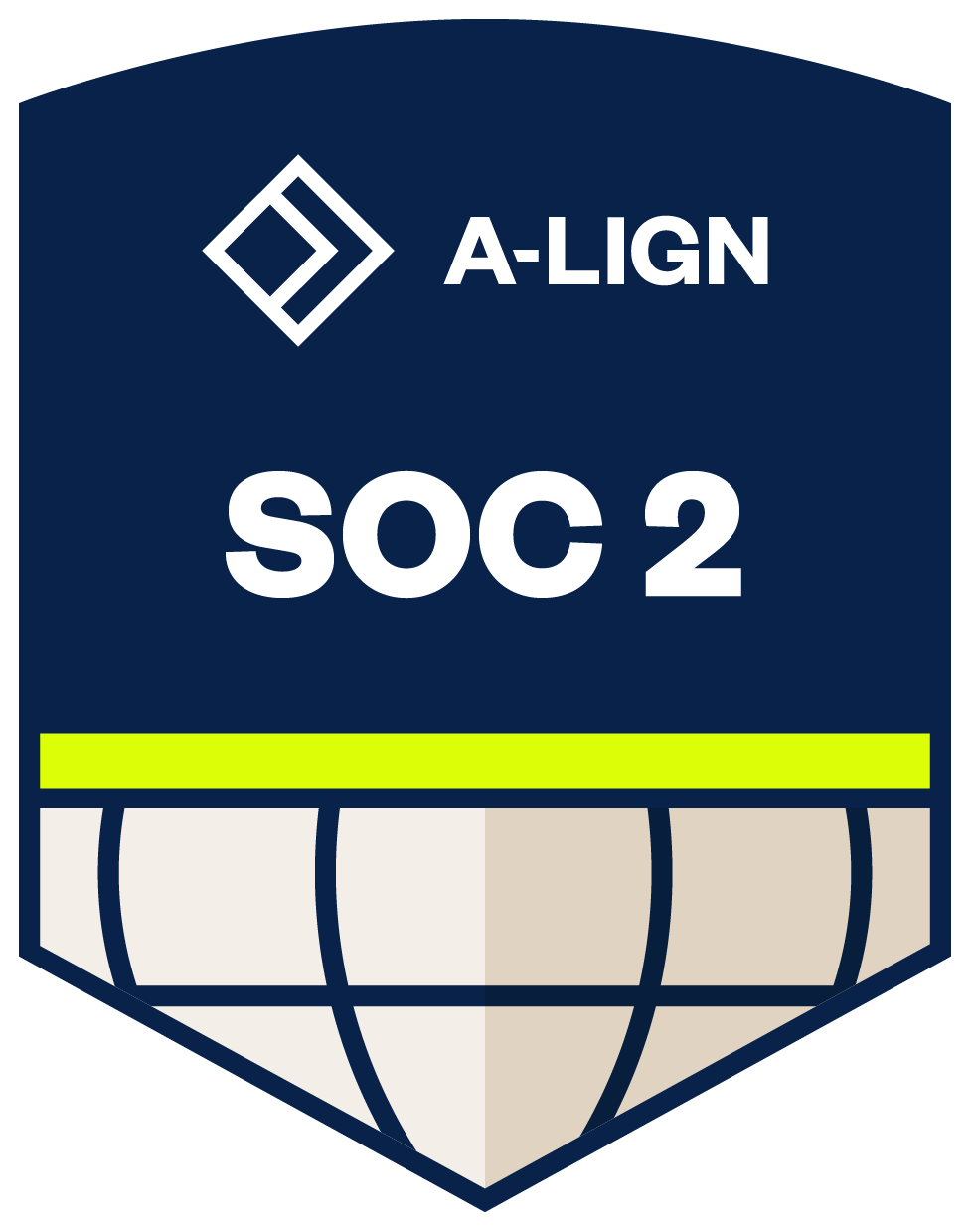ACA enhanced subsidies may expire at the end of December. And that uncertainty is already shaping patient decisions this open enrollment season. Many will switch plans, some may drop coverage, and medical practices need...
The way we pay for healthcare is changing, and it's about time. In a world where we can do almost everything with a tap on our phone, relying on cash or clunky payment systems feels outdated—especially in healthcare. That’s where digital payments come in.
By going cashless, healthcare providers can offer faster, more secure, and more convenient options for patients and staff. When paired with electronic health records (EHR) like Practice EHR, this shift isn’t just a nice-to-have; it’s a real game-changer for healthcare efficiency.
Whether you're a patient or a provider, these changes make a big difference, especially when paired with an electronic health record (EHR) system like Practice EHR. But how, exactly? Let’s break it down.
Key Takeaways
- Digital payments make life way easier for everyone. Patients want to avoid paper bills, long lines, or fumbling for cash after a doctor’s visit.
- Healthcare providers get paid faster, which means they can provide more patient care without chasing down invoices.
- Pairing digital payments with EHRs like Practice EHR keeps everything in sync. This cuts down on errors and makes record-keeping less stressful.
1. Easier Billing and Faster Payments
Anyone who’s dealt with traditional healthcare billing knows it can be a pain. Managing paperwork, cash, and receipts takes up a lot of time that could be spent overseeing patients in need. Switching to digital payments can make this process a lot more convenient for everyone. You don't have to wait for bills in the mail or count out exact changes. Everything can be done online or via card, saving patients and healthcare providers time.
When an EHR system like Practice EHR is in place, all the operations of the practice, including the billing process, become more streamlined.
Healthcare providers can instantly generate accurate bills, and patients can pay without leaving their homes. It’s fast, easy, and helps avoid common errors. No one enjoys spending extra time fixing payment issues or chasing after invoices.
2. Boosting Security and Preventing Fraud
It is not just the healthcare industry; handling cash in any business involves risks. Cash can get lost, stolen, or miscounted, and fixing those issues takes lots and lots of time and manual labor. Digital payments are not only more convenient but also come with higher security.
These systems use encryption, secure servers, and extra authentication steps to protect your money and personal information.
Another benefit? Digital transactions leave a clear trail of all the transactions, so finding the root of the problem is much simpler if an issue arises at any time. Instead of sorting through paper receipts, you can access transaction records in seconds.
When integrated with tools like Practice EHR, digital payment systems sync seamlessly with patient records, ensuring everything is organized and accurate from start to finish.

3. Optimising Patient Experience
No one wants to deal with payment hassles, especially after a doctor’s visit. When you're already not feeling great, the last thing you want to do is stand in line or scramble for cash. Digital payments take the headache out of the process by simplifying everything. Whether paying online from home or swiping a card at the clinic, it’s fast and straightforward.
Even better, going cashless gives patients more flexibility with payment options. Need to spread out your payments? No problem—digital systems often allow you to set up a payment plan.
This makes healthcare more manageable and takes some pressure off when facing those big medical bills. It may seem like a small change, but it can go a long way in elevating the overall patient experience by making it less stressful for both practice and patients.
4. Faster Cash Flow for Healthcare Providers
Delayed payments are a headache for healthcare providers. Slow payment processing, handling checks, and chasing down outstanding bills can all slow down a clinic’s cash flow. But with digital payments, things move faster. Payments are processed almost immediately, reducing the waiting period.
The billing cycle accelerates when a healthcare practice uses Practice EHR alongside digital payments. It takes merely a few clicks to generate invoices, send them to patients, and receive payments—all without spending hours organizing everything.
Moreover, quicker cash flow means providers can focus more on catering to patients' needs and less on manually managing finances.
5. Easier Record Keeping and Reporting
Accurate financial records are a must in healthcare, but even a minor cash transaction mistake can make things messy fast. Receipts get lost, and manual entries are prone to human error. With digital payments, a lot of those issues are eliminated. Payments are automatically recorded, so you have fewer errors and less time spent fixing them.
With an EHR system like Practice EHR, everything is connected—payments link directly to patient records. When it’s time for an audit or revenue report, all the information is in one place and can be easily accessed. There's no more hunting through paperwork or second-guessing whether everything’s been properly logged.
6. Helping the Environment
Beyond convenience, going cashless also has a positive impact on the environment. Traditional healthcare payments often involve paper, such as receipts, invoices, and forms. By shifting to digital methods, healthcare organizations can reduce paper usage and contribute to a greener future.
EHR systems like Practice EHR are reducing the paper used in patient records by digitizing everything. Adding digital payments only enhances these efforts, making healthcare more sustainable while saving money on printing and storage costs.
7. Expanding Access to Healthcare
Going cashless isn’t just about convenience—it’s about accessibility, too. Some patients, especially in rural or underserved areas, don’t always have easy access to cash or traditional banking services. Digital payments allow them to pay for healthcare services more efficiently without carrying physical money or traveling long distances.
Moreover, digital payment systems can support telemedicine, enabling patients to pay online for virtual consultations. This is especially helpful for those living in remote areas where accessing healthcare facilities might be difficult. Telemedicine combined with digital payments means more patients can receive care without worrying about cash.


Enjoy Cashless Healthcare With Practice EHR
Switching to cashless payments in healthcare isn’t just about keeping up with modern trends—it’s about creating a more efficient, secure, and patient-friendly system.
Combining digital payments and EHR systems like Practice EHR offers healthcare providers a way to streamline operations and deliver better service while making patient lives easier. From reducing errors to speeding up cash flow, going cashless is a win-win for everyone involved.
Evolving digital payments means fewer headaches, faster payments, and a smoother healthcare experience for providers and patients. Request your free demo today!
FAQs
Yes, they’re actually more secure than handling cash or checks. Digital payment systems use encryption, secure servers, and authentication steps to protect your personal and financial information. Also, there's a digital trail for every transaction, which helps prevent fraud.
Faster payments mean improved cash flow. Digital systems reduce delays, speed up billing, and eliminate the need for manual processing. When integrated with tools like Practice EHR, providers can generate and track payments with just a few clicks.
Definitely! Digital payments are perfect for telemedicine since they allow patients to pay for virtual visits from anywhere. This expands access to care, especially for patients in remote or underserved areas.
Topics: Patient Care, Small Practice, EHR Solution, Specialty-Specific EHR, digital age, HIPAA Security, Industry Update, Medical Billing, Medical billing services, EHR, Technology in Healthcare, EHR Features, Cashless Payments
RECENT POSTS



TOPICS
- EHR Solution (190)
- EHR (125)
- digital age (118)
- Patient Care (115)
- Medical Billing (111)
- Specialty-Specific EHR (110)
- Industry Update (97)
- Technology in Healthcare (84)
- EHR Features (79)
- Small Practice (76)
- Medical billing services (73)
- Integrated EHR (63)
- HIPAA Security (62)
- RCM (62)
- New Technology (44)
- Cloud-based EHR (43)
- Telemedicine (42)
- Healthcare Office Management (39)
- Practice EHR News (38)
- Kiosk (31)
- Revenue Cycle Management (28)
- AI Solutions (24)
- ePrescribing (21)
- AI Scribing (17)
- Best EHR Software (16)
- EMR (12)
- Practice Management Software (12)
- AI-powered Medical Billing (11)
- Practice Automation (11)
- AI EHR (10)
- Client Favorites (10)
- TeleVisit (10)
- The ONE (10)
- Switching to New EHR (9)
- AI Scribe (8)
- Best EHR Practice (8)
- EHR Integration (8)
- MACRA/MIPS (8)
- Patient Portal (8)
- Urgent Care (8)
- Psychiatry EHR (7)
- AI scanning (6)
- E-Prescribing (6)
- Product Updates (6)
- events (6)
- Automated Health Tools (5)
- MIPS (5)
- Mobile EHR (5)
- Family Medicine EHR (4)
- HIPAA (4)
- Integrated Practice Management (4)
- Internal Medicine EHR (4)
- MIPS Reporting (4)
- Medical Practice Management Software (4)
- Multilingual AI Scribe (4)
- Orthopedics EHR (4)
- Podiatry (4)
- Podiatry EHR (4)
- Regulatory Updates (4)
- Telehealth Platform (4)
- Chiropractic EHR (3)
- Digital Experiences (3)
- EHR Flaws (3)
- EHR Implementation (3)
- EHR for Chiropractors (3)
- EHR for Small Practices (3)
- Eligibility Verification in Medical Billing (3)
- Insider (3)
- Patient Check-in Kiosk (3)
- PracticeEHR GO App (3)
- Telehealth Platforms (3)
- Cash Flow (2)
- Cashless Payments (2)
- Clearinghouse (2)
- Dermatology EHR (2)
- EHR Scheduling (2)
- Family Medicine (2)
- Foot and Ankle Care (2)
- Foot and Ankle EHR (2)
- Health records 101 (2)
- Healthcare Compliance Certification (2)
- Medical Coding Services (2)
- Medical Credentialing (2)
- Pediatrics EHR (2)
- Quality of Patient Care (2)
- Reporting Under MIPS (2)
- Risk and Liability in Medical Settings (2)
- Voice-Activated AI Scribe (2)
- What Works Clearinghouse (2)
- ACA Subsidy (1)
- AI Scan (1)
- AI Scribe for Pediatric Care (1)
- Automated EHR (1)
- Bariatric EHR (1)
- Behavioral Health Practices (1)
- Billing Communication (1)
- Billing for Private Practices (1)
- Cardiology EHR (1)
- Charting (1)
- Data Security (1)
- Dos and Don'ts (1)
- EHR Guides (1)
- EHR KPIs (1)
- EHR Questions to Ask (1)
- EHR Transition (1)
- EHR for Chronic Illness (1)
- EMR vs EHR Difference (1)
- ENT EHR (1)
- Endocrinology EHR (1)
- Gastroenterology (1)
- Gastroenterology EHR (1)
- General Surgery EHR (1)
- Geriatric AI scribe (1)
- Geriatrics EHR (1)
- Guides (1)
- Healthcare Practice Office Management (1)
- Help Center Videos (1)
- Insurance Reimbursement (1)
- KPI (1)
- Key Performance Indicators (1)
- Lab Processing (1)
- MACRA (1)
- Medical Billing Partner (1)
- Nephrology EHR (1)
- Neurology EHR (1)
- Pain Management EHR (1)
- Patient Behavior (1)
- Pediatric Care (1)
- Physical Therapy EHR (1)
- Practice Cash Flow (1)
- Practice Efficiency (1)
- Pulmonology EHR (1)
- Reconsider Your EHR (1)
- Simplify Practice Management (1)
- Staffing in Healthcare (1)
- Switch Medical Billing Providers (1)
- Urgent Care Medical Billing (1)
- Urology EHR (1)
- insurance claim denials (1)










